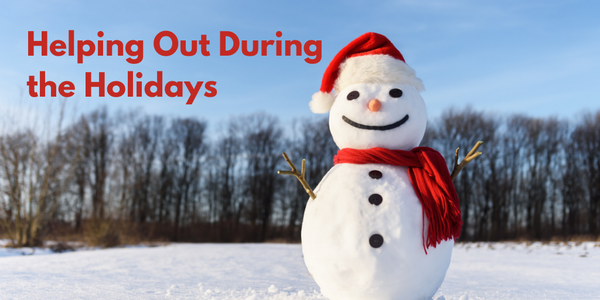By Paula Dugger, M.Ed.
All readers—emergent, fluent, above grade level, or struggling—need opportunities to reread and discuss familiar books to develop fluency, increase comprehension, and practice oral language skills. Some of the most rewarding activities I had as a reading teacher was monitoring “reading buddies” in my classroom. Listening to their conversations with shared books and watching their confidence grow would always put a smile on my face.
There are many ways to pair students in a buddy program. Each has rewards and benefits for both participants. One way to pair is by choosing students from the same small literacy group. This will ensure that students have the same books and allow you to scaffold academic conversations based on the content.
Another way is to pair readers from different grade levels. For example, a second-grade class may visit a kindergarten room to read with their reading buddies for twenty minutes every Friday afternoon.
You may also pair students from different grade levels who read below their intended reading level. This pairing can instill confidence and high self-esteem in both students. Older buddies are placed in the position of helping someone, and the younger buddies get to work with “an older” kid. While much of the reading centers around the younger buddy’s text, the older buddy should read their texts to improve fluency and model reading higher-leveled books.
Students need guidelines for what is expected during reading buddies. I use a gradual release model to structure reading buddy time. Once students are comfortable reading with each other, they can jointly decide where to start on the continuum. Teachers should provide their students with texts to work on but also allow for some self-selection opportunities.
Here is the simple model I use, along with a few examples using specific books.
Step 1: Buddies read the whole text in unison.
Step 2: Buddies take turns reading every other page. Then they reread the book, switching roles by reading the opposite pages.
Step 3: Each buddy reads the entire text independently to one another.
After these steps, allow time for scaffolded academic conversations about the book to boost oral language skills.
Here’s an example of how a lesson might work using Big Blue Heron (GR level C) from the Kaleidoscope Collection.
Step 1: Both buddies read the whole book in unison.
Step 2: Buddy A reads the even-numbered pages, and Buddy B the odd-numbered pages. Next, they would switch, with buddy B reading the even pages and buddy A the odd pages.
Step 3: Each buddy takes turns reading the book independently once they feel confident.
This is an excellent book for discussions about bullies and how to be a good friend.
In Big Blue Heron, the even-numbered pages have a repetitive text pattern different from the odd-numbered pages. By reading every other page, the readers work on fluency and oral language patterns that will make it easier when reading the whole text independently in step 3. As a teacher, when you assign buddy reading, take note of sentence patterns and which pages have words, so you can recommend ideal ways of taking turns when reading the story.


Time for academic discussions after reading the book is key. However, scaffolding is essential. Create an anchor chart of questions and prompts as a reference and model using it during whole group book conversations:
Who is your favorite character in the book?
Explain a new piece of information you learned from the book.
If you could ask the author any question about the book, what would you ask? Have your buddy pretend to answer the question as if they were the author.
Find a text feature that helped you understand the book.
As students grow accustomed to discussing their books, they will begin to generate their own questions and prompts you can add to the anchor chart.
Dash’s First Snow (GR level H) is another book from the Kaleidoscope Collection. Its text is found only on the even-numbered pages. Buddies will need to alternate reading the pages with text. The text also does not have repetitive phrasing, so students may want to read this text together more than once before proceeding to step 2. This book can lead to discussions about winter, fun activities in the snow, and pets.

Reading buddies can be an enjoyable learning experience for children as they improve their reading and continue to develop oral language skills. It’s often said that “reading can take you places,” so why not have a buddy join you on the journey?
Click the image below to download free Reading Buddies Reference Cards.
~~~
The Kaleidoscope Collection comprises 180 leveled readers and 70 big books, guided reading levels A–K. Also available in Spanish.
Are you already using the Kaleidoscope Collection? Check out the online Teacher's Guide and Printable Comprehension Worksheets.
~~~

Paula Dugger has a B.S., M.Ed., and Reading Specialist Certification from The University of Texas at Austin and Reading Recovery training through Texas Woman’s University. Paula spent 35 years in public schools teaching children to read in grades 1-12, including 23 years as a Reading Recovery Teacher and Teacher Leader. She also served as a Reading Recovery Teacher/ Teacher Leader and the reading coordinator for her school district in Texas, overseeing district-wide reading programs spanning all grade levels. In addition, she has been an adjunct professor in reading at Texas Woman’s University and Dallas Baptist University.
Paula and her husband Neil enjoy raising Texas Longhorns and are parents of two daughters and five grandchildren. She has authored over 40 blogs and 22 early literacy books for Hameray. She finds it personally rewarding that her books are the starting point of her grandchildren’s journey to becoming successful and proficient readers.
















































![6 Fun and Easy Activities to Practice Sequencing [Grades K-1]](http://www.hameraypublishing.com/cdn/shop/articles/Red_Typographic_Announcement_Twitter_Post-5_bf1ae163-a998-4503-aa03-555b038d1b76_600x.png?v=1689961568)
![Leveraging Prior Knowledge Before Writing and Reading Practice [Grades 1–2]](http://www.hameraypublishing.com/cdn/shop/articles/Red_Typographic_Announcement_Twitter_Post-4_600x.png?v=1689961965)




